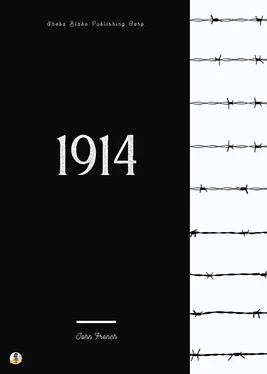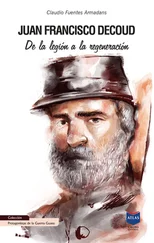John French - 1914
Здесь есть возможность читать онлайн «John French - 1914» — ознакомительный отрывок электронной книги совершенно бесплатно, а после прочтения отрывка купить полную версию. В некоторых случаях можно слушать аудио, скачать через торрент в формате fb2 и присутствует краткое содержание. Жанр: unrecognised, на английском языке. Описание произведения, (предисловие) а так же отзывы посетителей доступны на портале библиотеки ЛибКат.
- Название:1914
- Автор:
- Жанр:
- Год:неизвестен
- ISBN:нет данных
- Рейтинг книги:3 / 5. Голосов: 1
-
Избранное:Добавить в избранное
- Отзывы:
-
Ваша оценка:
- 60
- 1
- 2
- 3
- 4
- 5
1914: краткое содержание, описание и аннотация
Предлагаем к чтению аннотацию, описание, краткое содержание или предисловие (зависит от того, что написал сам автор книги «1914»). Если вы не нашли необходимую информацию о книге — напишите в комментариях, мы постараемся отыскать её.
1914 — читать онлайн ознакомительный отрывок
Ниже представлен текст книги, разбитый по страницам. Система сохранения места последней прочитанной страницы, позволяет с удобством читать онлайн бесплатно книгу «1914», без необходимости каждый раз заново искать на чём Вы остановились. Поставьте закладку, и сможете в любой момент перейти на страницу, на которой закончили чтение.
Интервал:
Закладка:
Murray followed me to Headquarters about 3 a.m., and reported that all orders had been carried out effectually and that the move was proceeding satisfactorily. All the troops were very tired and had suffered severely from the heat. Our losses in the fighting of the last two days were considerable, but not excessive, having regard to the nature of the operations.
In the early hours of the 25th the retreat was continued, again covered skilfully by Allenby’s cavalry.
During the night the 4th Division had nearly completed their detrainment, and were taking up the position assigned to them towards Cambrai. In the course of the morning of the 25th I visited Snow, who commanded this Division, and went over the ground with him.
The only action of importance during the day occurred at Solesmes, when the rearguard of the 3rd Division under McCracken was heavily attacked. Allenby, with the 2nd Cavalry Brigade (4th Dragoon Guards, 9th Lancers, and 18th Hussars), came to his assistance and enabled him to continue his retreat. He did not, however, arrive at his appointed destination till late in the evening, and then it was with very tired men.
The reports received up till noon of the 25th showed that the French were retiring all along the line, and there was no longer any doubt in my mind as to the strength and intention of the enemy in our own immediate front. Three Corps and a Cavalry Division were concentrating against us, whilst a fourth Corps and another Cavalry Division were trying to turn our western flank.
I had now to consider the position most carefully and again come to a momentous decision. Was I to stand and fight on the line to which the Army was now retiring (Le Cateau—Cambrai) or continue the retreat at daybreak?
To hold the Le Cateau position in view of the heavy threat on my front and western flank was a decision which could only be justified if I were sure of the absolute determination of the French Commander to hold on all along the line with the utmost tenacity; but our Allies were already a day’s march in rear of us, and every report indicated continual retreat. At least one Army Corps and two Cavalry Divisions of the enemy were engaged in an outflanking movement on my left, in which they had already made some progress, and the only help I could depend upon in that quarter was from two French Reserve Divisions spread out on an enormous front towards Dunkirk, and very hastily and indifferently entrenched. It was unlikely that they would be able to oppose any effective resistance to the enemy’s flank movement.
If this flank attack were successful, my communications with Havre would be practically gone.
There had been neither time nor labour available to make the Le Cateau position strong enough to withstand a serious onslaught by the superior numbers which were advancing against my front, and the British troops, which had been almost continuously marching and fighting since Sunday morning, stood in much need of rest, which could only be secured by placing some serious obstacle, such as a river line, between my troops and the enemy.
After long and anxious deliberation, it seemed clear to me that every consideration pointed to the necessity of resuming our march in retreat at daybreak on the 26th, and orders to that effect were accordingly issued.
I determined to direct the march on St. Quentin and Noyon. The troops were to be held so concentrated as to enable me to take immediate advantage of any change in the situation which might check the retreat and offer favourable opportunities for taking the offensive. Failing such developments, my idea was to concentrate behind the Somme or the Oise. Behind such a barrier I should be able to rest the troops, fill up casualties and deficiencies in material, and remain ready to act effectively with the Allies in whatever direction circumstances might dictate.
The retreat had been resumed at daybreak, and at 6 p.m. all the troops of the 2nd Corps were on the Le Cateau line except McCracken’s Brigade, which, as before described, had been obliged to stand and fight at Solesmes. The 1st Corps, however, was delayed in starting for several hours, and was only able to reach the neighbourhood of Landrecies; so that at the conclusion of the day’s march a somewhat dangerous gap existed between the 1st and 2nd Corps, which caused me considerable anxiety in the small hours of the morning of the 26th.
When darkness fell on the 25th, the enemy had sent forward advance troops in motors and lorries through the Forêt de Mormal in pursuit of the 1st Corps. This culminated in a violent attack on Landrecies, which, however, was splendidly driven off with heavy loss to the enemy, chiefly by the 4th (Guards) Brigade under Brigadier-General Scott-Kerr.
With reference to this action, the following is an extract from a letter which I despatched to Lord Kitchener on August 27th:—
“The 4th Brigade were fighting in the early morning in the streets of Landrecies. A German infantry column, about the strength of a brigade, emerged from the wood north of the town and advanced south in the closest order, filling up the narrow street.
“Two or three of our machine guns were brought to bear on this magnificent target from the other end of the town. The head of the column was checked and stopped, a frightful panic ensued, and it is estimated that, in a very few minutes, no less than 800 to 900 dead and wounded Germans were lying in the streets.”
Sir Douglas Haig, although his troops were very tired and handicapped also by heavy rearguard fighting, still proceeded to carry out the instructions he had received, and the retirement of the 1st Corps was continued in excellent order and with complete efficiency.
Things did not go so well with the 2nd Corps. General Allenby, who had been most ably covering the retreat of the Army with his cavalry, had already materially assisted the rearguard of the 3rd Division to surmount their difficulties at Solesmes. McCracken’s Brigade (7th) (3rd Batt. Worcester Regt., 2nd Batt. S. Lancs Regt., 1st Batt. Wilts Regt., and 2nd Batt. R. Irish Rifles) did not reach the Le Cateau position until 10 or 11 p.m. on the 25th. His men were, of course, nearly done up, and he had suffered severe losses.
Colonel Ansell, Commanding the 5th Dragoon Guards, one of the finest cavalry leaders in the Army, who fell at the head of his regiment a few days later, gave information to General Allenby at about 2 a.m. regarding the nature of the German advance. This seemed of such great importance that the latter at once sought out Sir Horace Smith-Dorrien and warned him that, unless he was prepared to continue his march at daybreak, he would most probably be pinned down to his position and would be unable to get away. Sir Horace asked General Allenby what, in his opinion, were the chances he had if he remained and held the position, adding that he felt convinced his troops were so exhausted as to preclude the possibility of removing them for some hours to come. Allenby’s reply was that he thought, unless the commander of the 2nd Corps made up his mind to move at daybreak, the enemy probably would succeed in surrounding him.
Nevertheless, Sir Horace determined to fight. As to this decision, a commander on the spot, and in close touch with his Divisions and Brigades, is in the best position to judge of what his men can do.
I had, late on the evening of the 25th, before leaving for my Headquarters at St. Quentin, visited several units of the 2nd Corps in their bivouacs and, though tired indeed, they had not struck me as being worn out troops.
By the break of day on the 26th the 5th Division on the right had secured several hours’ rest. The same may be said of the 8th and 9th Brigades, which came next in the line. The 7th Brigade had only just arrived at cantonments at 10 p.m. or 11 p.m. on the 25th, after a heavy day’s march and some severe fighting, but they could in such an emergency have marched at dawn. The 4th Division on the left of the 2nd Corps was comparatively fresh.
Читать дальшеИнтервал:
Закладка:
Похожие книги на «1914»
Представляем Вашему вниманию похожие книги на «1914» списком для выбора. Мы отобрали схожую по названию и смыслу литературу в надежде предоставить читателям больше вариантов отыскать новые, интересные, ещё непрочитанные произведения.
Обсуждение, отзывы о книге «1914» и просто собственные мнения читателей. Оставьте ваши комментарии, напишите, что Вы думаете о произведении, его смысле или главных героях. Укажите что конкретно понравилось, а что нет, и почему Вы так считаете.












